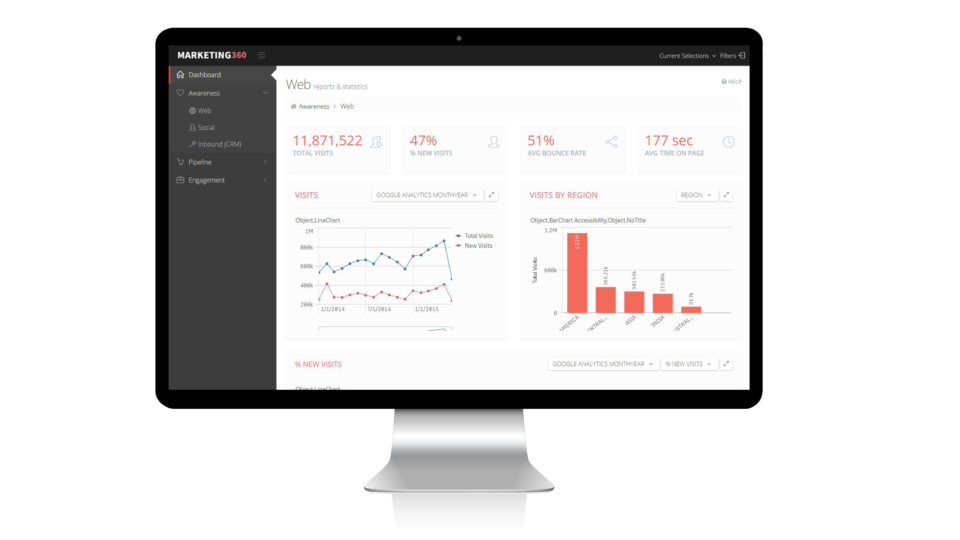6 questions to ask before choosing a marketing analytics solution
1. What level of insight do you need?
You and your stakeholders ask various questions about data. These questions surround campaign performance, marketing spend, effectiveness, audience, behavior, and other factors. Some users might only need high-level data. Others may have to pull data from multiple sources. Brainstorm questions you and other users will ask about the data, and look for a platform that provides all the levels of insight your organization requires.
2. How many buyer personas do you have?
If you have and/or seek to identify a greater number of buyer personas, lean toward a tool with more sophisticated customer segmentation capabilities. More advanced platforms let you identify your most profitable target markets, determine specific customers for cross-selling and upselling opportunities, and quantify KPIs for each audience (e.g., customer lifetime values, activations, churn).
3. How complex is your marketing mix?
If your marketing mix tends to be complex, integrating customer data will be of higher importance to you. A platform that provides analytics on integrated customer data can help you target and engage the right prospects and customers. Look for the capability to pull together structured data (e.g., POS data) and non-structured data (e.g., social media conversations). You should be able to analyze data across multiple channels, accurately attribute results to touch points, and see customer behavior and product trends regardless of the data source.
4. How capable are your analytics resources internally?
Evaluate your team’s analytics skills. In addition, determine how much time can be allocated to analyzing data and communicating insights to stakeholders. If your team is like most, you need to use resources efficiently. A general rule of thumb is to avoid tools that require significant effort to mine, clean, understand, and share data. Time is better spent exploring data, uncovering stories contained within it, and devising strategies that enable discoveries.
5. How do your stakeholders need to receive reports?
If your stakeholders would value the ability to explore data at their convenience, find a platform that provides interactive data views where users can slice and dice data on the fly. If you are involved in cross-functional teams, look for collaboration and annotation features to improve group decision making. In most cases, stakeholders don’t have time for dissecting lengthy reports. Find a platform that lets you create highly visual dashboards and summaries of KPIs to provide these snapshots.
6. How extensively does your team need to be working on the go?
If you’re frequently on the road, or want to create a more mobile-enabled team, look for a platform that includes a mobile app with all the functionality of the desktop or web-based version. Make sure the mobile app is touch-enabled and intuitive, making your experience with your platform seamless across all devices.
Contact us




